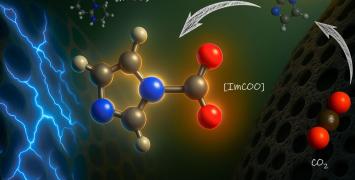Critical challenges in quantum applications
After the birth of quantum mechanics in the early 20th century, this branch of physics evolved from being primarily the conceptual framework for the description of subatomic particle phenomena to providing inspiration for new technological applications. New hybrid architecture of quantum systems is now being developed in order to foster the implementation of cutting-edge quantum technologies.
In the 1980s scientists found that the fundamental laws of quantum mechanics can be exploited for the construction of different practical technologies, such as secure communication, highprecision sensing and processing of quantum information. These insights into the vast potential for quantum applications have even evolved into a whole research field of its own, namely quantum information science.
Yet, while this field of research has witnessed a rapid development in the past two decades, scientists are still rather far away from accomplishing quantum information processing and quantum computing systems, such as quantum networks linking registers across the globe or full-fledged quantum computers. Until now, the developments were mainly driven by rapidly evolving abilities to experimentally manipulate and control quantum dynamics, ranging from single photons to individual electron and nuclear spins. The rule until recently was that each of these quantum information carriers can execute one or a few specific tasks, but no single system can be universally suitable for all envisioned applications. Photons, for example, are best suited for transmitting quantum information and could be used for long distance links between remote registers. Nuclear spins are used for storage and core computational tasks, whereas electronic spins of defect centres, as one can find them in diamonds, serve as an interface between nuclear spins and photons.
ERC grantee Prof. Ronald Hanson and his team at the Delft University of Technology, are however trying to build the so called hybrid quantum networks, where nuclear spins, electron spins, and photons each play the part that suits them best. This could lead to the development of devices that could simultaneously perform several tasks, e.g. reliably store, process, and transmit quantum states.
By bringing together theory and experimental techniques from a large range of disciplines, Prof. Hanson is addressing two critical challenges remaining in order to implement quantum information technologies: quantum feedback controls (to correct errors induced by unwanted environmental influences [decoherence] and imperfect manipulation), as well as long-distance quantum networks.
The team hopes, that by solving these challenges, they can uncover a range of new opportunities for fundamental science and future applications, which would have a broad impact on quantum science. By establishing elementary long-distance quantum networks for example, the secure exchange of information over very long distances could be made possible and a pathway for scaling quantum information processors beyond a handful of quantum bits could be achieved.
Read also Prof. Hanson’s interview in Horizon magazine.
This article was first published in ERC Annual Report 2016.






